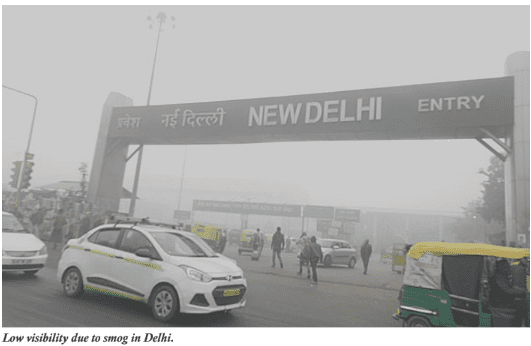
It is that time of the year when the capital city is choked by polluted air. The festive season, stubble burning, and less rainfall have impacted the entire country, pushing the air quality index levels (AQI). The air quality in India has been degrading at an alarming rate, yet it does not seem to affect the general population and the government. Stubble burning is a major factor worsening the air quality level. In 2020, 42 per cent of polluted air came from stubble During this year’s Diwali, the situation became severe in the country’s capital city and other parts. The capital city woke up to a blanket of thick smog along with an AQI higher than 500. Even after the government’s efforts, courts, and celebrities who helped raise awareness about an eco-friendly Diwali, it did not seem to affect most of the city’s population. Social media created a divide between people who supported the crackers’ ban and others who didn’t. In the fight of ideologies combined with politics between both sides, the environment experienced a tremendous loss. The festival of lights has always taught people to be compassionate, considerate, and guiding light in others’ lives. However, moral values have not played a significant role in changing the mindsets of individuals. The government is yet to take any action to prevent the situation from worsening. Furthermore, India awaits a strict policy that can control the level of pollution. Though, there are existing laws and standards, they do not seem to impact industries, farming processes, and vehicle emissions significantly. The world is moving towards the sustainability model, and India is trying to follow the same path. Implementing strict policies, followed by government actions, will enable the general population to be more aware and careful. It will also lead India to a better and greener path.
According to a worldwide survey conducted by IQAir, India had 21 out of 30 most polluted cities in the year 2019. The average AQI number was 152, and recorded PM 2.5 fig- ure was 58.08μg/m3, which is five times more concentrated than the recommended levels by World Health Organization. It was discovered that over 2 million people lose their lives due to health issues related to air pollution. These facts are enough to show the requirement for immediate action.
Out of the top 10 most polluted cities in the world, three of them are from India. Delhi ranks first with its AQI at 556, more than 1.5 times the second most polluted city. In the same list, Kolkata ranked four, and Mumbai was at the sixth position. These are all metropolitan cities with a heavy industry presence, a higher migrant population, and a higher common population.
burning in neighbouring states. Emission of greenhouse gases, unfavourable wind speed, and bursting firecrackers
during Diwali add to the increasing problem.
10 Jan 2022
Abhishek Anand